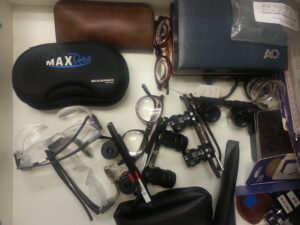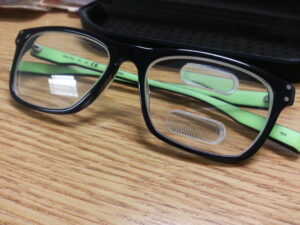Dear Diary,
Fourth year clinical rotations are the pinnacle of optometry school that all students are anxious for. It’s a time of freedom, learning, and exposure to parts of optometry you may never see in the school clinic. Or is it?
My name is Lawrence Yu, and I’m currently on my clinical rotations as a fourth year student at the Southern California College of Optometry at Marshall B. Ketchum University. Through this blog, I will chronicle and share my rotations experience throughout the year at my four different sites. Join me as I leave the safety of the school clinic and enter the real world of optometry. Learn with me as I see some crazy eye diseases. Suffer with me as I endure moving every 2.5 months. Follow me and prepare yourself for your last year of optometry school.
—–
Second Rotation: The Value of Low Vision
Low vision may not spark as much excitement in optometry students as other topics, but it definitely deserves more. As I mentioned last time, low vision was never something I considered pursuing because it seemed to be full of equations and frustration with difficult patients. However, after three months at a low vision clinical rotation, I now firmly believe in the value of low vision care for optometry students and their patients.

One of the simultaneously wonderful and challenging aspects of low vision is the lack of a clear end-point. Patients present with a wide variety of issues and disease manifestations that require individualized care. As students, we learn about the characteristic visual symptoms of diseases such as central scotoma for macular degeneration and peripheral vision loss for retinitis pigmentosa. However, the only way to learn about the potential of low vision aids is as a clinician trying different devices and solving problems together with patients.
For example, a patient with a history of CRVO presents with difficulty reading. To create a goal for my exam, I ask what she would like to be able to read that she cannot read now. The patient wants to read her magazines, which usually have 20/40 print. After finding the right hand magnifier that obtains a comfortable 20/40, the patient reports that the illumination from the magnifier is too bright. Although light sensitivity may not be classic symptom of CRVO, we must manage the issue. A tint was included in her glasses to manage the light sensitivity and increase contrast, both which will make reading magazines much easier.

Even though I could not achieve every goal for my low vision patients, they were always grateful to try new resources. As the doctor, my primary goal is to offer hope for visual improvement. Low vision is a constantly changing field with an increasing reliance on improving technology. Additionally, pricing for these tools are coming down as technology becomes more available. My secondary goal is to offer lifestyle improvement. Low vision patients face difficulties such as reduced field or reduced contrast, so non-visual tools such as motility aids, proper lighting, or psychological support groups become key. Moreover, the outside-the-box problem solving skills that you develop in low vision carry over to all facets of optometry to help your most difficult patients. There are seemingly infinite ways to help low vision patients and some of the best solutions may not even involve optics.
Lastly, the main reason I really enjoyed my low vision rotation (to my surprise!) was emotional satisfaction. These patients are coming to see me usually as a referral and as a last hope to return to normal life. Patients are immensely grateful for any help that you can offer, and their joy makes my efforts more than worth it. Students should try to expose themselves to as much low vision as possible because there are more low vision patients now than ever, and we have the power to give them vision they thought was gone forever.
Here’s a list of some life-changing moments for both my patients and myself:
- A young man who had homonymous hemianopsia field loss due to a stroke was given his motility back with Pelli prism. He remarked that he had half of his world back with these glasses.
- A grandmother who could not make dresses anymore for her grandchildren due to macular degeneration was given her skill back with a stand magnifier and a specialized needle threader.
- A middle-aged man who had four (!) retinal detachments with extreme visual field loss was relieved of his neck pain due to educating him where his visual field defects were and compensating with proper object placement for reading.
- A woman who had such extreme light sensitivity due to end-stage glaucoma and could not bear the light from an electronic VA chart was made more comfortable after a thorough tint evaluation.
- A young man who thought he was too cool for magnifiers until he realized how much easier it could be for him to see said, “I don’t care anymore what people think. This will help me get my life back.”
Now go out there and change the lives of your patients through low vision!

